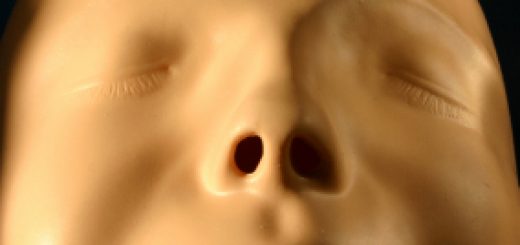Caring for a Child with the Common Cold
Babies, toddlers and preschoolers are highly susceptible to colds. On average, a child may have three to eight colds a year. For unknown reasons, some children are more prone to getting colds than others. Among all children, however, the frequency of colds usually decreases with age.
Children in daycare tend to bring home more colds than those who are not cared for in group settings, but this early exposure to many cold viruses makes them less vulnerable once they reach school age.
Causes of the Common Cold
Colds are caused by viruses that are transmitted through droplets released into the air in sneezing or coughing. They can also be spread through touch. Cold viruses can live on objects such as toys, doorknobs and dishes for up to 72 hours.
During this time, they pass from the surface of an infected object or the hand of an infected child to the hand of a healthy youngster. When the healthy child rubs his nose or eyes, the virus enters the body. Within two to four days, it can spread throughout the upper airways, causing a runny nose, a scratchy throat, sneezing, coughing and burning eyes.
Cold symptoms usually last for three or four days, or until the inner lining of the nose sheds the virus. They may, however, persist for up to ten days. Occasionally a runny nose and cough may linger for weeks.
Telling the Difference Between Illnesses
The signs and symptoms of colds closely resemble those of many other disorders. Symptoms of influenza are similar but more severe. Allergies may also cause a runny nose, but they do not produce a fever and are often associated with constant and consistent bouts of sneezing. A nasal discharge may occur when a foreign body is lodged in the nose, but in these cases the discharge is likely to be bloody and foul-smelling. Bacterial infections such as strep throat tend to strike more suddenly and make children sicker than colds do.
Seeking Medical Attention
Most colds can be handled at home. Medical attention is necessary only if signs and symptoms of complications develop. Possible complications of colds include middle ear infections, sinusitis, bronchitis, and pneumonia. Some children with asthma tend to have attacks in conjunction with colds, which also may necessitate medical attention.
Treatment for the Common Cold
More than 100 different cold medications are on the market, but their effectiveness is limited and they may not be safe for children. In fact, there have been reports of serious harm being caused by commercially available cold remedies.
Always check with a medical professional before giving a child any cold remedy. In general, though, the best bet is to tough it out, since the side effects of medications can be worse than the cold itself.
Preventing Colds
The best way to protect a child from catching more than his share of colds is to encourage frequent handwashing, discourage eye and nose rubbing and regularly wipe down toys and surfaces with a disinfectant solution.
Caring for a Child with a Cold
- Since dry air can make the symptoms worse, maintain high humidity in the house or near the child’s bed.
- Elevate the child’s head by moving the head of the crib mattress up a notch or providing extra pillows. (Use pillows only for older children.)
- Do not give cough-suppressing medications unless the doctor prescribes them; coughing clears the airways and prevents further infection.
- Consider acetaminophen (Tylenol, Tempra, Datril, Panadol and other brands) if the child has a fever.
- Never use decongestant nasal sprays for more than three or four days—after initial relief, they may have a rebound effect and cause worse congestion.




